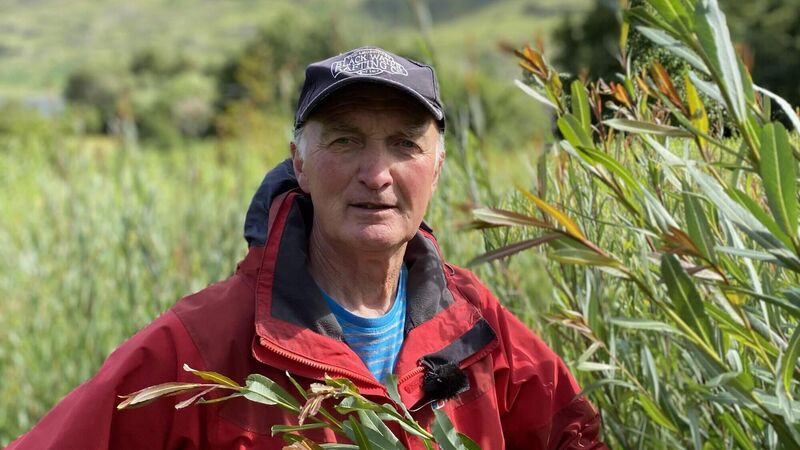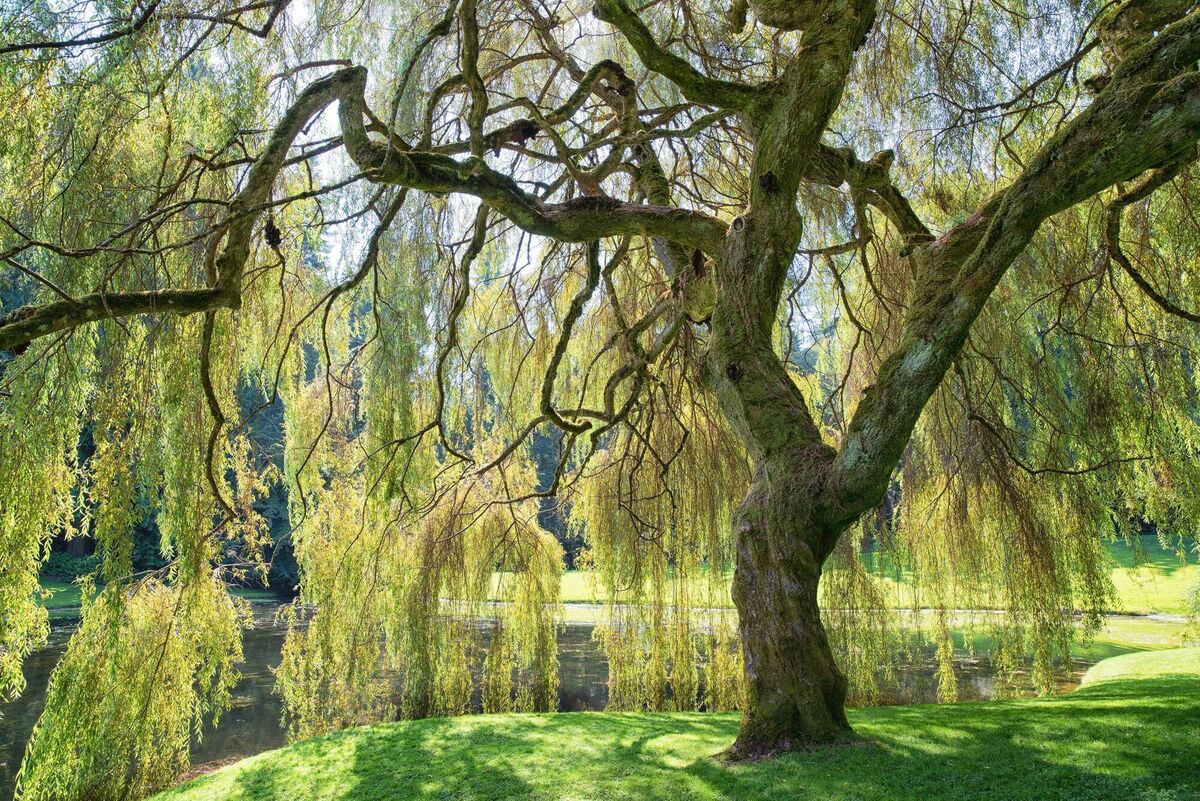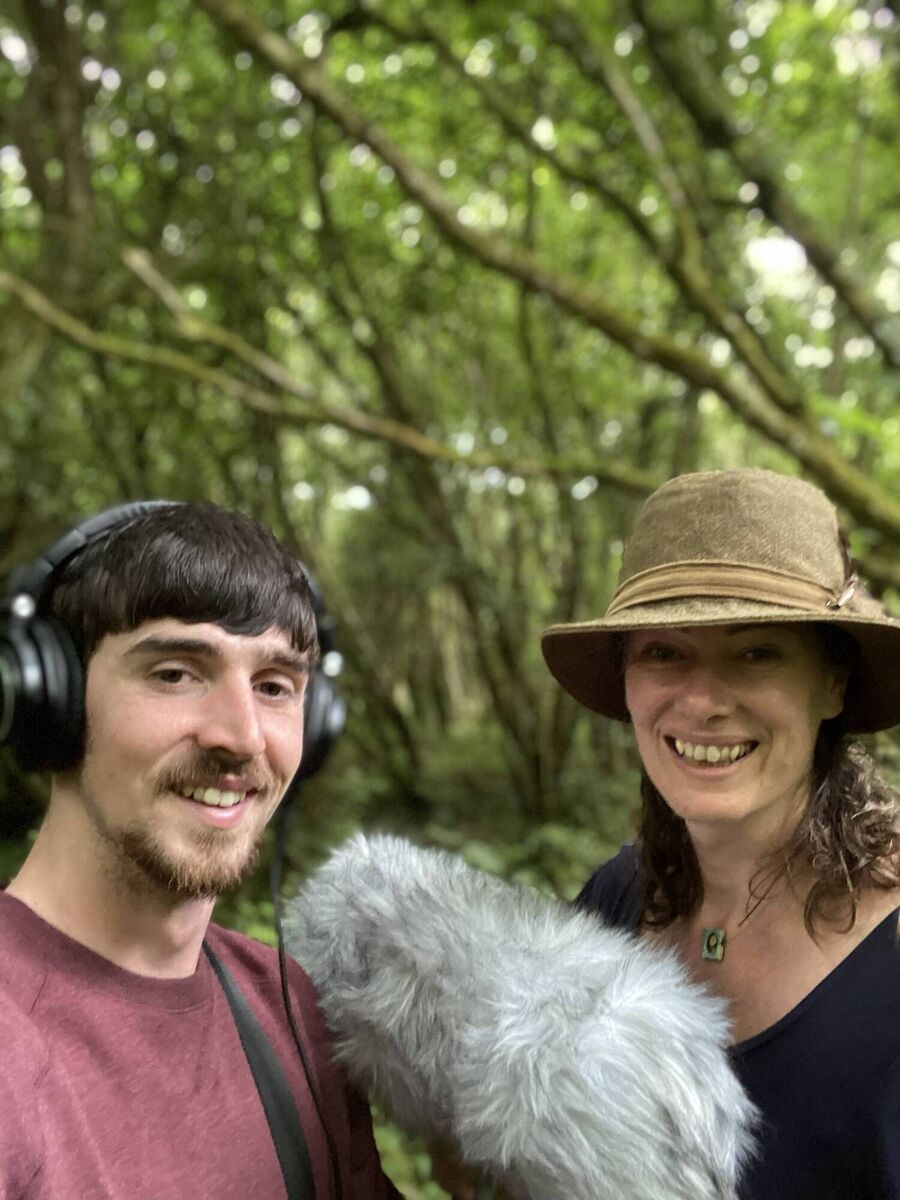Versatile and sustainable: Here are five ways willow is used in ecological restoration

'Master basket maker' Joe Hogan among the willows in his Sally garden in Connemara. Picture: Brían MacGloinn
Willow is a tree with many uses. In Ireland we have about a dozen different native species of willow, though because different types mix together so easily, there are an uncountable number of hybrids, all quite difficult to tell apart.
Traditionally, willow has been used to weave baskets, a craft that goes back to the earliest humans. In Ireland, sally gardens were a feature of every townland, providing willow rods for hand baskets, donkey creels, lobster pots, and baskets for draining potatoes. Willow rods would be cut from the first moon in November, providing basket weaving materials through the winter months and baskets that would get replaced every few years. As a perfect example of a renewable resource, willow baskets are far more in keeping with nature than plastic bags, plastic nets — or even cardboard boxes.

Not only has willow been enormously useful in the past, but it is now being used in multiple ways to restore land and water where we have made a mess.
1. Willow helps clean wastewater. Willows don’t mind getting their feet wet, some species grow well in soggy ground. This is why we often see willow at the edge of lakes and rivers and in wet swampy places. As it grows, it absorbs and assimilates nutrients from water, so water from sewerage treatment plants which is almost but not quite clean is good growing medium for willow trees. In this way, specifically engineered willow beds are used to improve discharges from public waste water systems as a final phase of water treatment. In counties Monaghan and Donegal, pilot schemes using willow to filter water from waste water treatment works are demonstrating how successful this approach can be for protecting watercourses from polluting effluent. An added benefit is that the willow is harvested on a rotational basis to provide woodchip.
2. Willow is particularly effective at buffering rivers and lakes against diffuse pollution from land spreading of fertilisers and slurry. Across Ireland, water quality is continuing to decline, mainly because of increasing pressure from agriculture, in particular dairy, pigs and poultry. As a result, Ireland’s rivers lakes and estuaries are being inundated with nutrients, failing to meet basic legal standards for water quality. Each year we hear about further increases in the number of poor status water bodies. Nutrient pollution has to be prevented at source, but mitigation measures such as planting willow in buffer strips can also help to restore good water quality in rivers and lakes.
3. The third use of willow is in ‘Natural Flood Management’. Willows have roots that reach far and are especially fibrous, so are especially good at helping rainwater to infiltrate soil. During flood events, the more water that gets absorbed by tree roots and soil, the less flows over land to reach stream and river channels quickly. Actively planting willow and other broadleaved trees in targeted parts of the catchment helps to slow the flow of water, thus reducing flooding. This approach is called ‘slowing the flow’ and is the core principle of Natural Flood Management, a catchment-wide approach to reducing the frequency and severity of flood events. With climate change accelerating and extreme weather becoming more frequent, natural flood management is an approach that can help landscape-scale resilience to frequent storms and floods.
4. The fourth way that willow is used in ecological restoration is by planting willow cuttings to stabilise river banks and prevent erosion. Willow cuttings take easily once planted, establishing good roots quickly. I’ve visited river restoration projects from Duhallow in north west Cork to Inishowen in north Donegal, where sticks of living willow have been successfully used to stabilise eroding river banks and improve fish spawning habitats as a result.
5. The fifth is an approach called ‘phytoremediation’ — a way of rehabilitating contaminated land by growing pollution- tolerant trees such as willow. Willow is a pioneering tree so it grows quickly and tolerates harsh conditions, including on heavily polluted land. Across the world, phytoremediation uses willow’s ability to break down pollutants in their root zone, with the help of associated soil microbes. Over time, plants ‘rehabilitate’ contaminated land by reducing the concentrations or toxic effects of contaminants. Willow can even process heavy metals from polluted sites. In this way, willow is widely used to clean soils after industrial pollution from manufacturing or mining operations.
THE CLIMATE IMPACT OF...
Agriculture
All of these approaches are now called ‘Nature-based Solutions’, solutions to human problems that utilise nature’s restorative capabilities. Rather than assuming that the answers to our problems are necessarily technological, it's time to return to the wisdom of nature to help us out of the environmental mess we are in.

To celebrate the culture, folklore and ecology of Willow in Ireland, I have made it the focus of the fourth episode of , a new radio series I have made for RTÉ Lyric FM with musician Brían MacGloinn, one half of the award-winning folk music duo, Ye Vagabonds. Each episode examines a different native Irish tree through interviews, narration, and specially composed songs by Brían.
In the Willow episode (Oct 30) we meet celebrated basket maker Joe Hogan in Connemara, visit his sally garden, and hear about the traditions of basket making in Ireland. I also talk to Professor Jane Stout of Trinity College Dublin about the importance of willow catkins as an early source of pollen to bees when few flowers are in blossom. That bees are so reliant for early pollen and nectar on wild willow has long been understood, one of the Irish words for willow is ‘lúth bech’ which translates as ‘sustenance of the bees’.
Willow is a tree that had an important place in our past as a vital resource. It is enormously generous with its nectar ad pollen, providing vital habitat to many species. And now, this little celebrated tree has huge potential for the future.
- airs on RTÉ Lyric FM on the Lyric Feature, each Sunday at 6pm, or wherever you get your podcasts.








